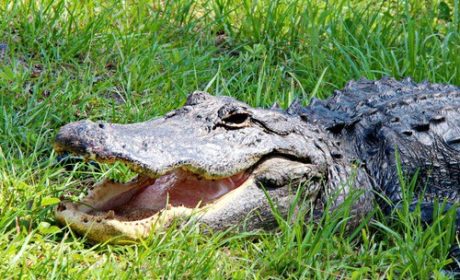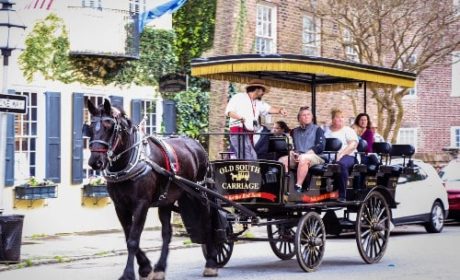Are you looking for road trip ideas for Georgia? Callaway Gardens near Pine Mountain is a wonderful addition to your itinerary.
Vickie Lillo writes about visiting Callaway Gardens for butterflies and wellness. This sounds like a fun, relaxing way to take a break from the road!
Created by Cason J. Callaway and his wife, Virginia Hand Callaway, the 2,500-acre Callaway Gardens is a feast for all five senses. It’s also a beautiful nature escape only an hour and a half southwest of Atlanta.
Since 1952, boomers and their families have enjoyed the 2500-acre Callaway Gardens in the piney woodlands of Pine Mountain, Georgia. They come in the spring for rainbow-colored azaleas.
In summer, they lounge on the beach of Robin Lake. My husband and I came for the butterflies and wellness activities.
Table of Contents
Cecil B. Day Butterfly Center: meeting Callaway Gardens butterflies
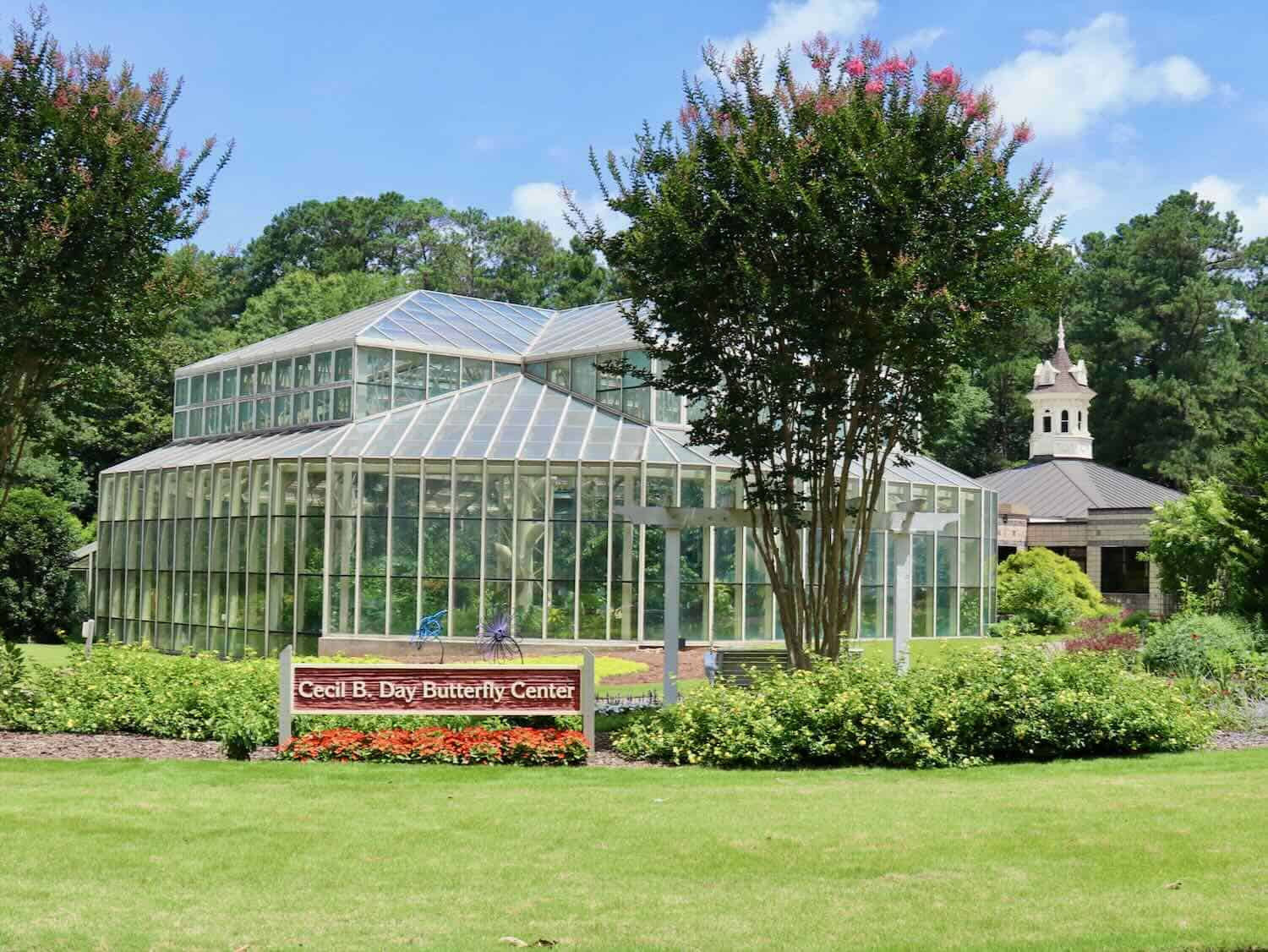
The Cecil B. Day Butterfly Conservatory (official website) teems with over 1,000 specimens of butterflies, on average. The thermometer is maintained at a steady temperature all yearlong to promote the growth of neo-tropical plants, the habitat for these magnificent winged creatures.
All day long, the light bathes this sultry landscape filled with mauve butterfly bush, coneflowers, and tie-dye blooms of lantanas in a delicious warm glow. At a perpetual 70-90° year-round, the air in the conservatory is hot and humid, almost stifling after a while.
It’s the perfect conduit for nourishing these hardy perennials that serve as a constant nectar-source for bees and butterflies.
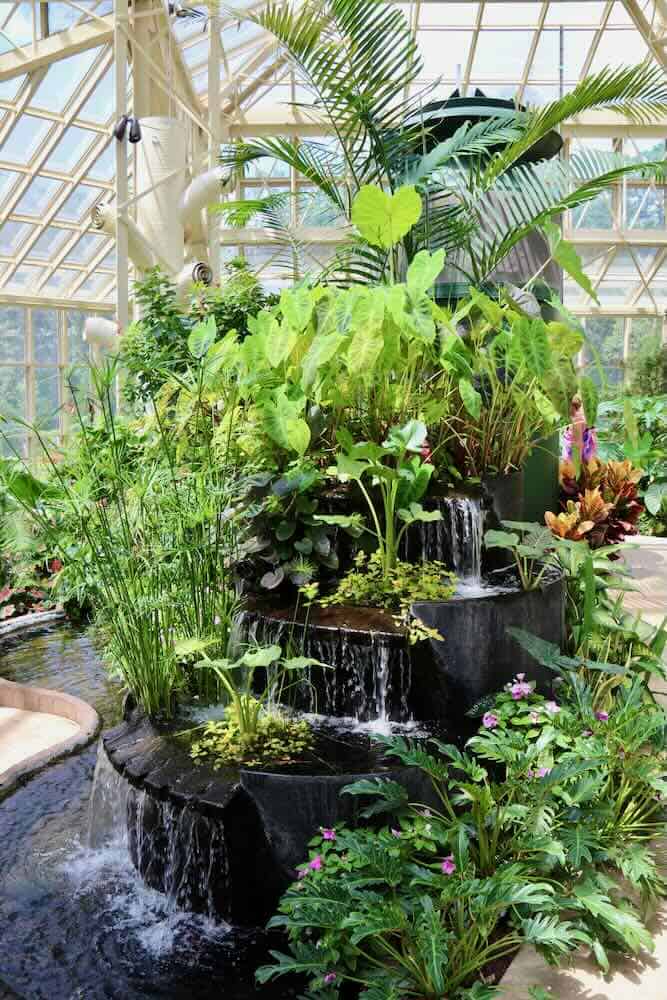
“We have flowers inside and outside of the Callaway Gardens Butterfly Center that thrive at overlapping bloom times,” explains Bethany Harris, Assistant Director of Environmental Education, specializing in horticulture and entomology .
The exotic butterflies themselves are flown in from seven global farms, including Costa Rica, Ecuador, Malaysia and the Philippines.
“Ordinarily, we receive shipments every Thursday, of between 500-1000 chrysalises,” comments Center Manager Andrew Gray. “We hang them, separating them by species.”
Gray steps up to an exhibit of dangling pupae, each principal group with similar attributes accordingly assembled into its natural taxonomic unit.
“The time required to go from egg to butterfly varies by the individual classification, but most of them have a 2-4-week lifespan. Longwings may live up to three months.”
Appreciating the Blue Morpho
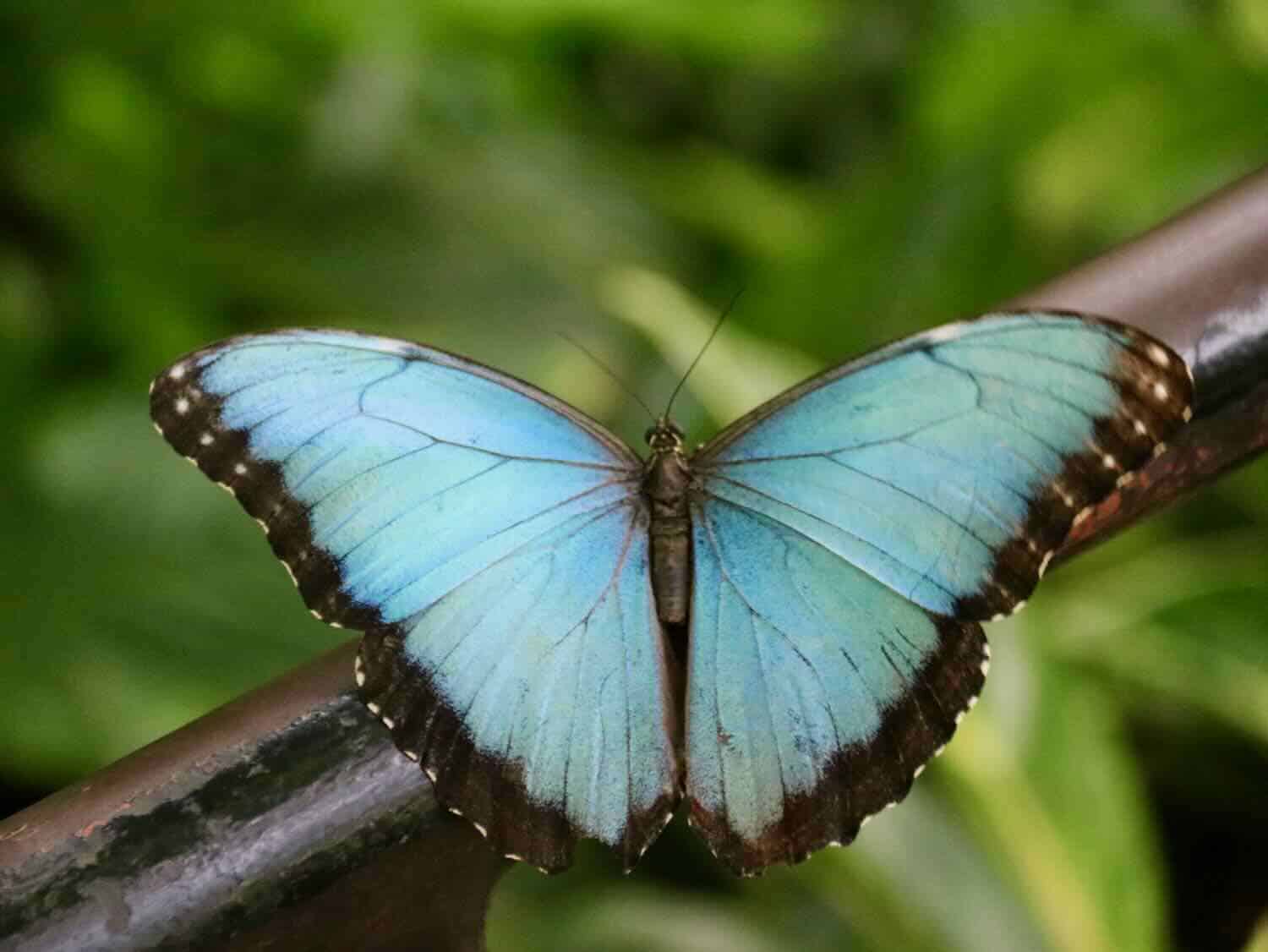
The showiest butterfly of all – the Blue Morpho – swoops across the backside of an aquatic turtle, pausing momentarily atop its bony ridge.
“By far, those butterflies are my favorite,” gushes Harris. “They are known for their radiant blue wings.” However the hue is only an illusion.
Not a result of pigmentation, the striking cobalt tint is rather the result of reflection off the microscopic scales on the backs of the butterfly’s wings. Without warning, the Blue Morpho settles onto the pant leg of my husband’s jeans.
Beyond the cloud-forests of Costa Rica and Panama (where it’s considered a treasured national symbol), the absolute best place to view a real-life Morpho butterfly is right here at the Buttefly House Calloway Gardens.
“We get large shipments of them in September,” Harris says. “To celebrate Blue Morpho month.”
I close my eyes and imagine hundreds of the translucent cerulean butterflies floating on gossamer wings, caught on an updraft from the circulating fans.
For a second, a Blue Morpho flutters on my hand, beating its sapphire membranes against the lines that thread across my open palm. The insect refracts the rays of sunshine streaming through over 1000 window panes, dawn till dusk, inside the Cecil B. Day Butterfly Conservatory.
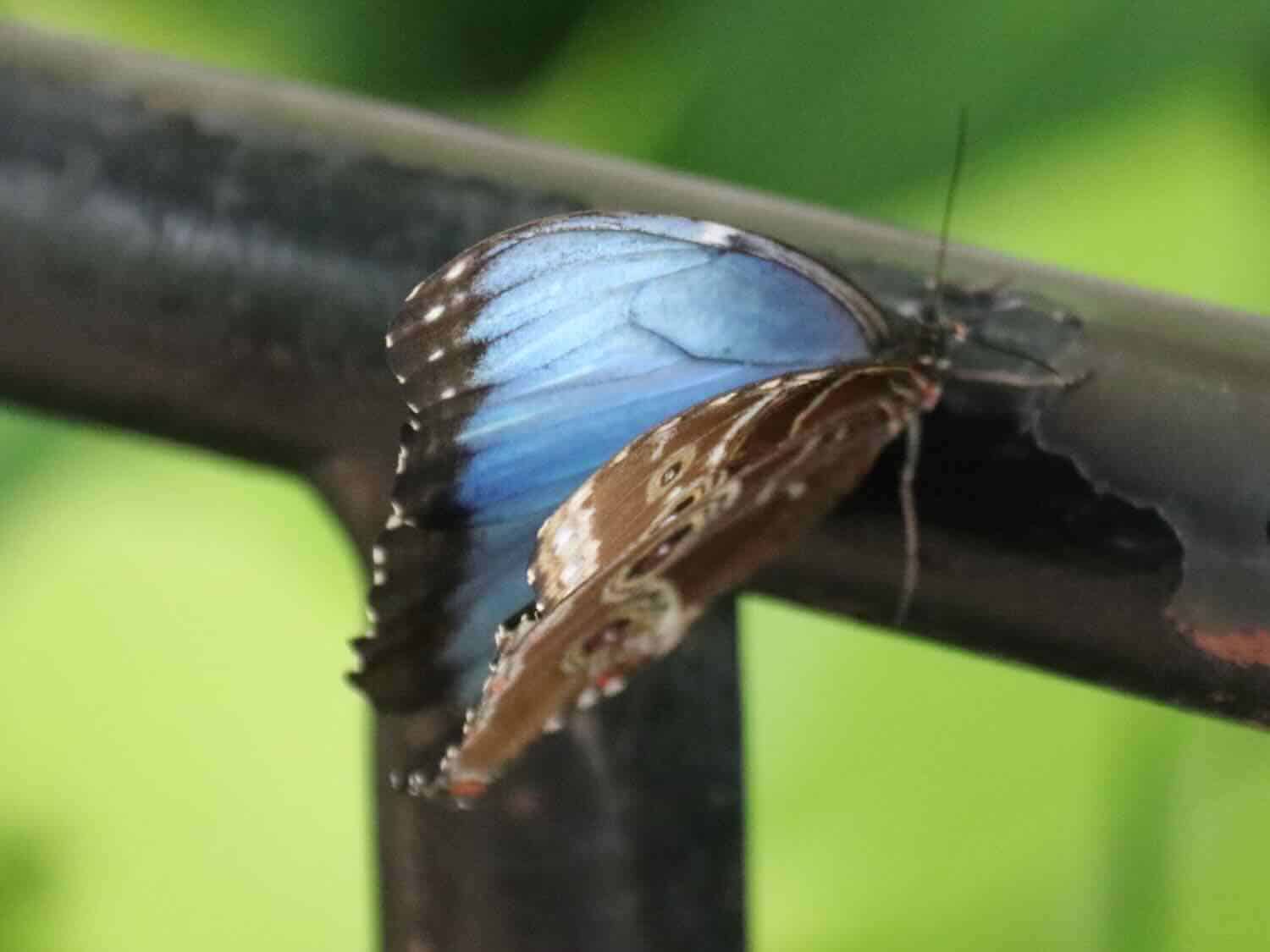
Unremarkably dull brown with markings of gray, black and red on its underside, plus ocelli that resemble eyespots, the Blue Morpho slowly begins to unfold its diaphanous wings. Unfurling like a delicate blossom the butterfly reveals its magnificent azure coloration.
I wonder if this iridescent, electric-blue butterfly, considered one of the largest on the planet, is drawn to the bright-red floral pattern of my blouse. I watch its shimmering hind and fore wings, edged in black, glisten inside the all-glass conservatory here at Callaway Gardens.
With a final flap, flap, flap, the Blue Morpho tires of sitting in my hand and sashays toward the railing by the rippling cascade near the exit door.
Watching Malachites
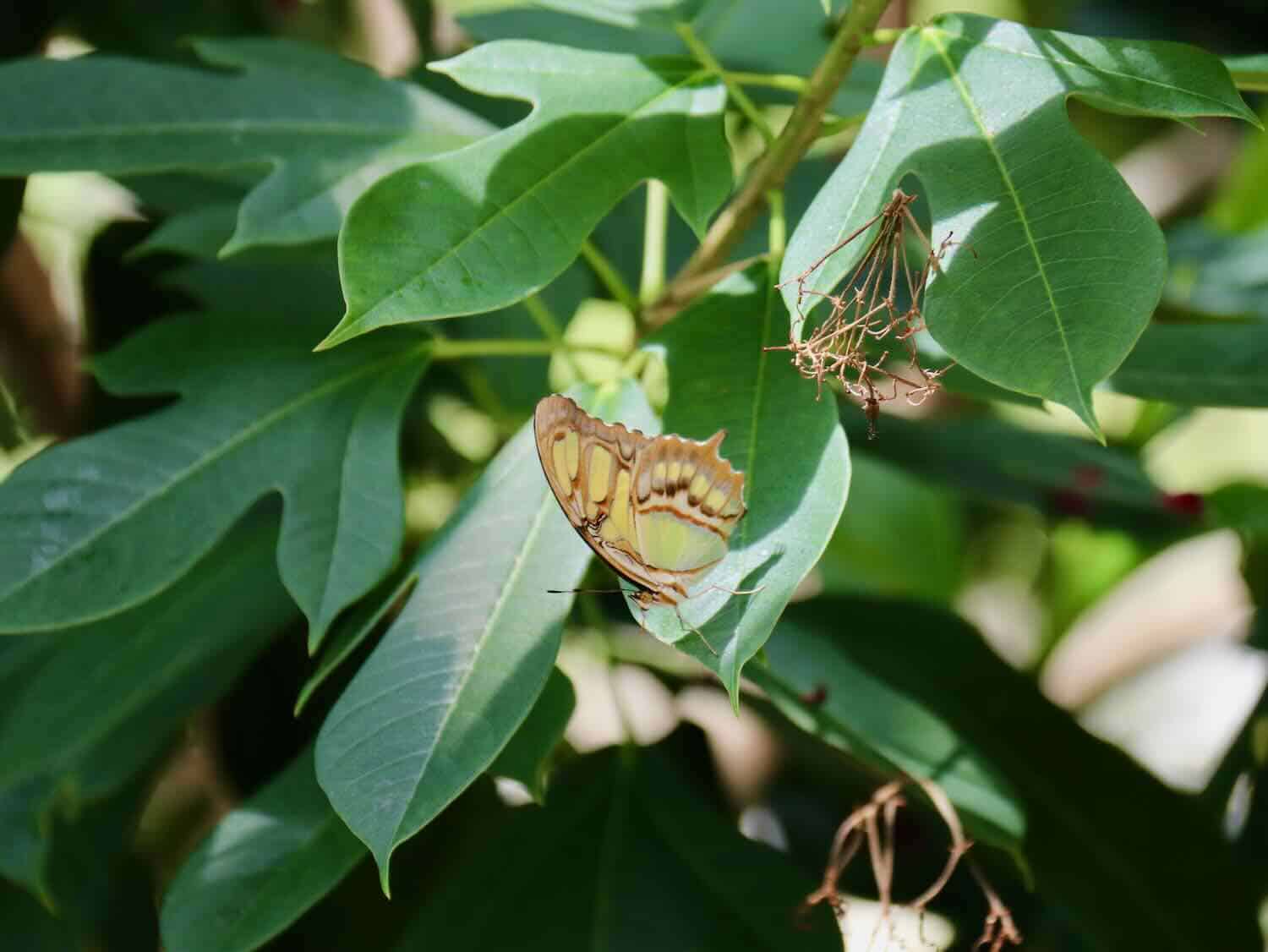
My husband Gustavo and I continue meandering along the pathway that winds through clusters of celosia cockscomb blooms, resembling fuzzy rooster crests, and saffron coreopsis flowers. Surrounded by Malachites, ebony and yellow-green butterfly beauties, we watched them tasting the air with their antennae.
These miniscule radio transmitters atop their tiny heads hone in on the scent of partially-rotting oranges, suspended in a hanging planter. It’s a favorite in their adult diet, much-preferred over the other prized selection on their menu – bat dung.
Up close with a Paper Kite
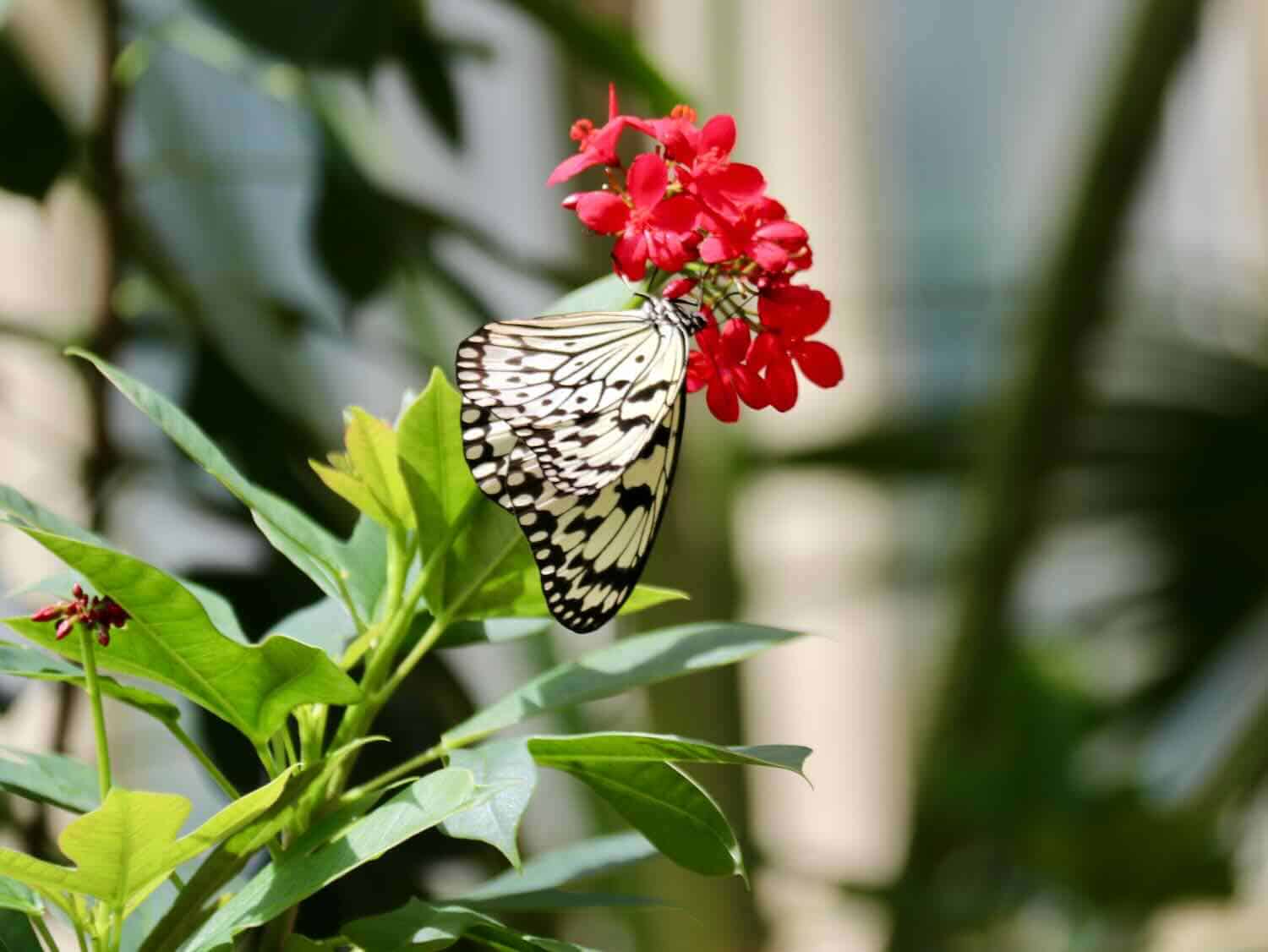
And then, Gustavo and I have a chance to get up-close-and-personal with a Paper Kite. It greets us eagerly, darting like a mischievous nymph amongst the cultivars of glossy abelia shrubs, spectacular ferns, and a sea of impatiens annuals.
Only a day ago, this beauty emerged from its lustrous, speckled-gold chrysalis as a zebra-striped adult, striated by thin, onyx streaks and dot patterning on a background of white.
Learning about the Great Owl butterfly
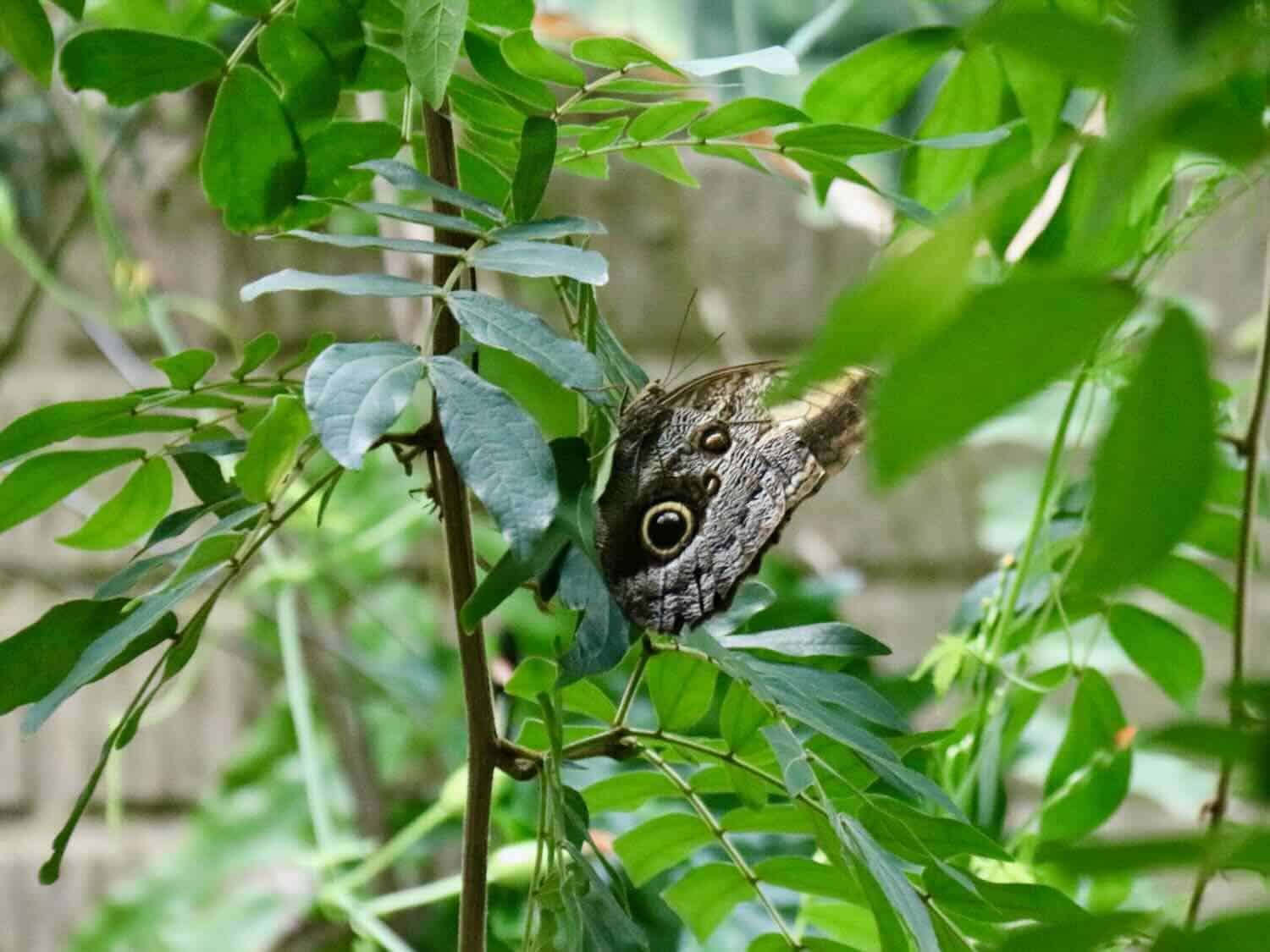
“Have you seen the Great Owl butterfly?” Manager Gray asks. “When it opens its wings, it looks like an owl peering at you with both eyes.”
Colors and markings of the Great Owl resemble the foliage of its natural habitat – the rainforests of Central and South America. The coloring works as camouflage, giving this beautiful showman the ability to avoid detection from predators.
“It has two snake eyes as well,” Andrew directs our attention to the smaller pair of eyespots on the underside of its lower wings.
The butterfly speeds away towards the fragrant chartreuse blossoms of a delicate Ylang Ylang tree.
Visitors would never imagine that this incredible specimen, in spite of a handsome demeanor in the wild, is a bit of a hooligan. He’s content to wile away his days slurping nectar and sparring with fellow suitors over a mate.
However, with no females here in the conservatory, the Owl butterfly occupies its time in gluttonous consumption of fermenting, half-rotted fruit.
Boomer Travel Tip
Looking for more butterfly trips? Take a winter trip to see the Monarch butterflies in Mexico.
Life cycle of butterflies at the Callaway Gardens Butterfly Center
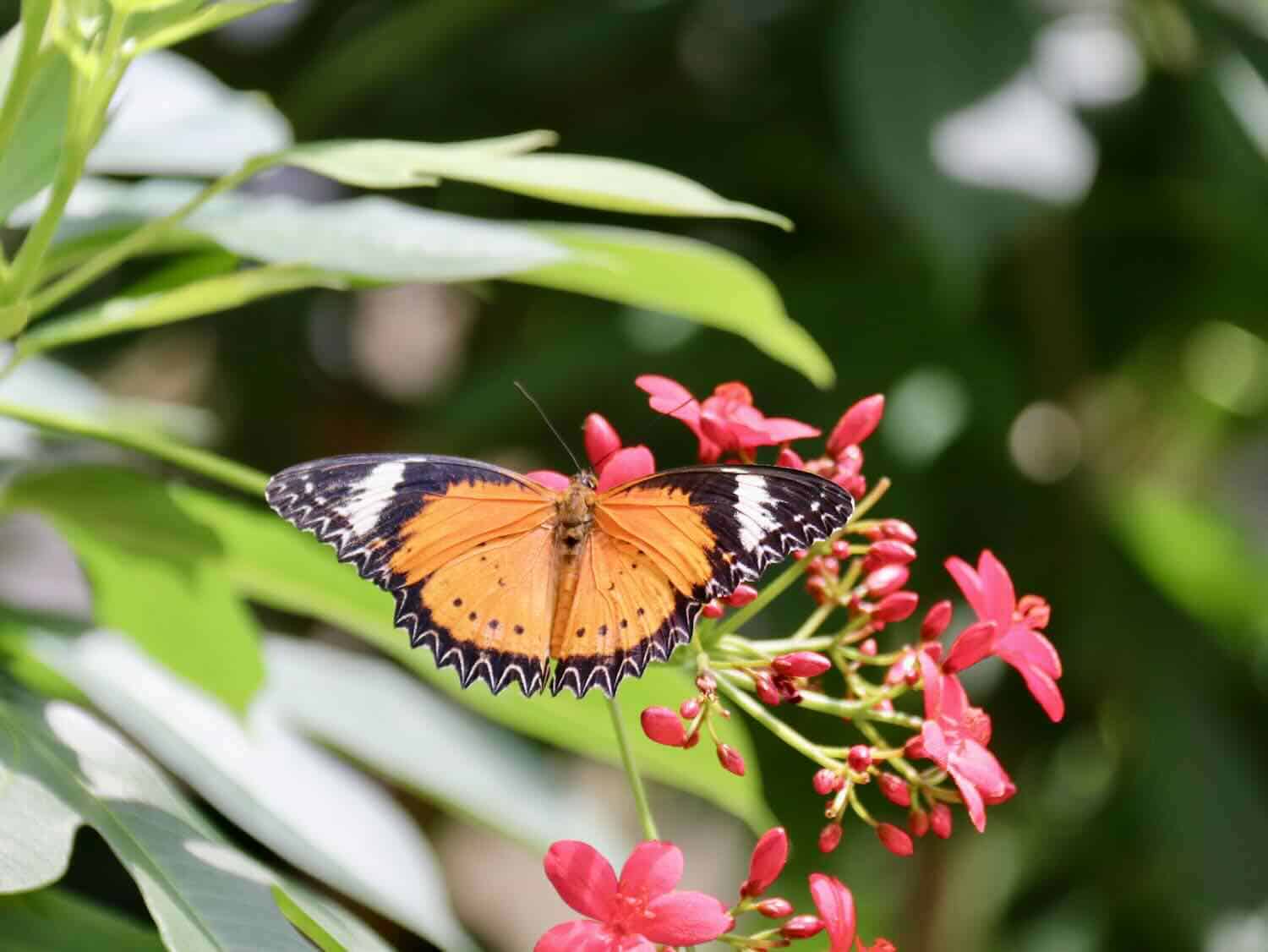
As a non-breeding institution, the greenhouse does not nurture any host plants. In other words, no plants that would entice the butterfly to lay eggs and then provide food for stimulating larval growth.
Andrew Gray explains, “None of the species are local and that’s why this is a USD-regulated facility.”
This caterpillar phase is already completed when the insects arrive as immobile pupae in a protective wrapper that safeguards them until final metamorphosis begins. The process includes immature segmented worms completely liquifying themselves before mutating into a soupy enzyme that ends up eating the caterpillar and transforming into the eventual adult.
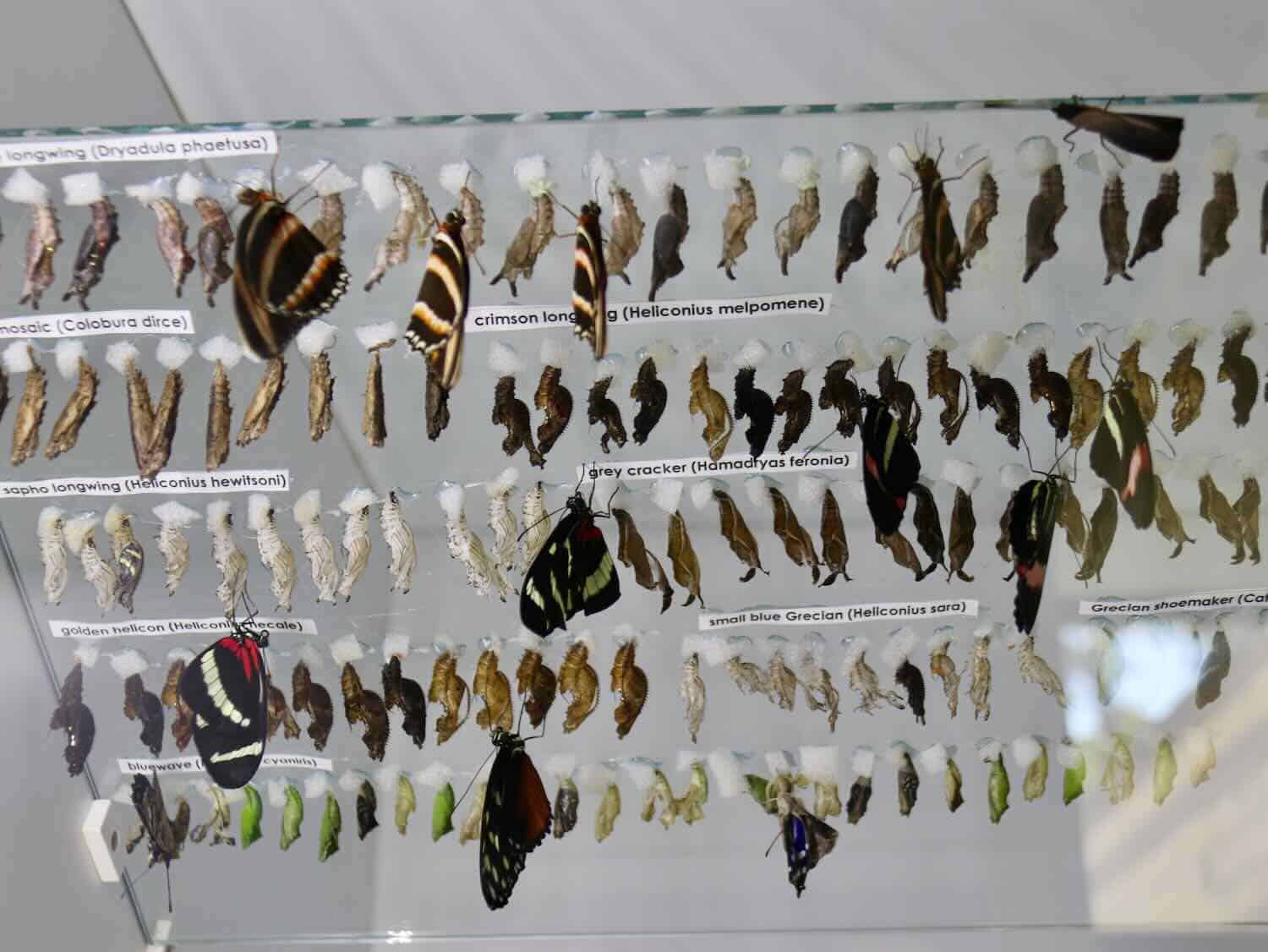
Moth larvae, on the other hand, spin a silk shell of protein, called a cocoon, to encase themselves.
“They look like hanging cones of brown paper,” Andrew laughs.
When they first emerge from the chrysalis, the butterflies are all hunched over, with their wings wrapped around them. Then, they begin pumping fluid from the abdomen to their wings.
The butterflies hang on to this casing until the wings are thoroughly dried out. When they finally drop off the pupa, they are taken into the conservatory.
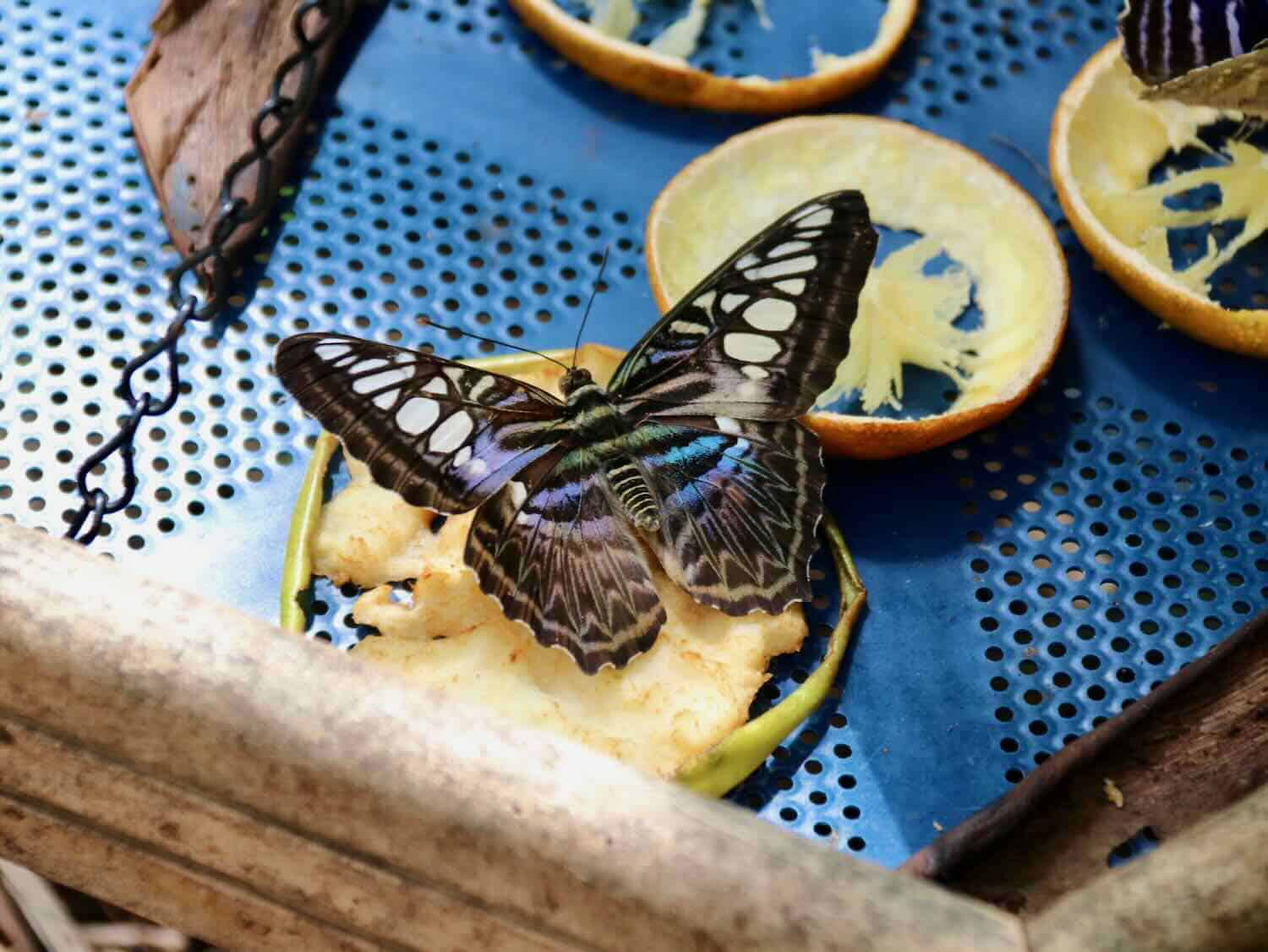
Andrew explains, “We only keep the males. They are allowed to live out the rest of their existence doing nothing but feeding on nectar plants.”
Once the insects expire, same as any non-native dead flora from the conservatory, all must be properly disposed of by either solarizing or freezing.
Attracting Georgia’s local butterflies
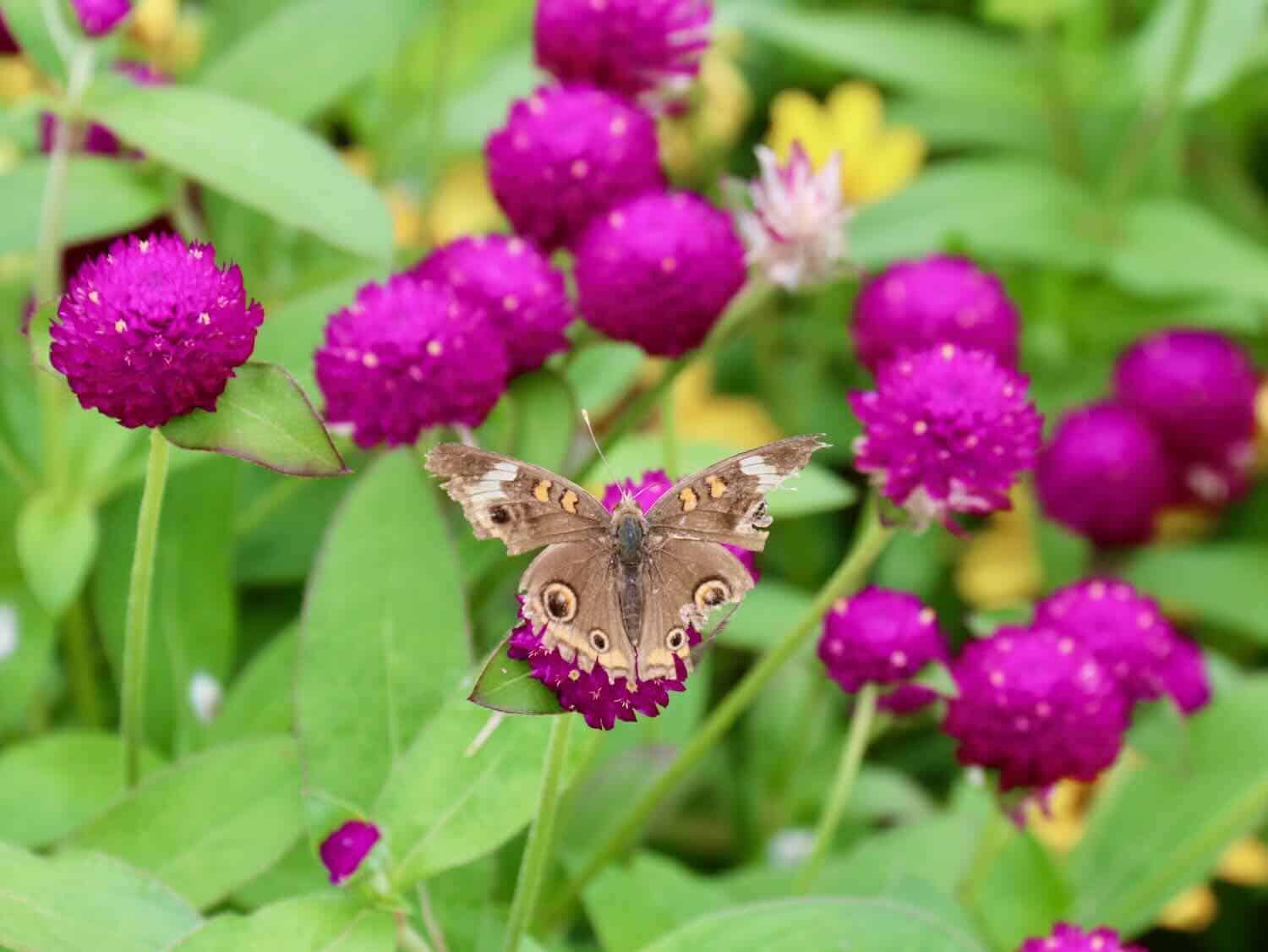
To attract the local Georgian butterflies, Bethany Harris and her team of horticulture experts have planted Bronze Fennel for Eastern Swallowtail caterpillars, Butterfly Milkweed for Monarchs and Wild Senna for Cloudless Sulphur larvae.
Besides the blur of color from butterflies inside the Conservatory proper, outdoors bees and Lepidoptera native to Georgia feast on the sweet nectar of exquisite blooms. They sip nectar from flowers like scarlet salvia, with its vibrant red tubular flowers, and assorted rudbeckia. Colorful daisies attract the insects, as well as dragonflies and flittering hummingbirds.
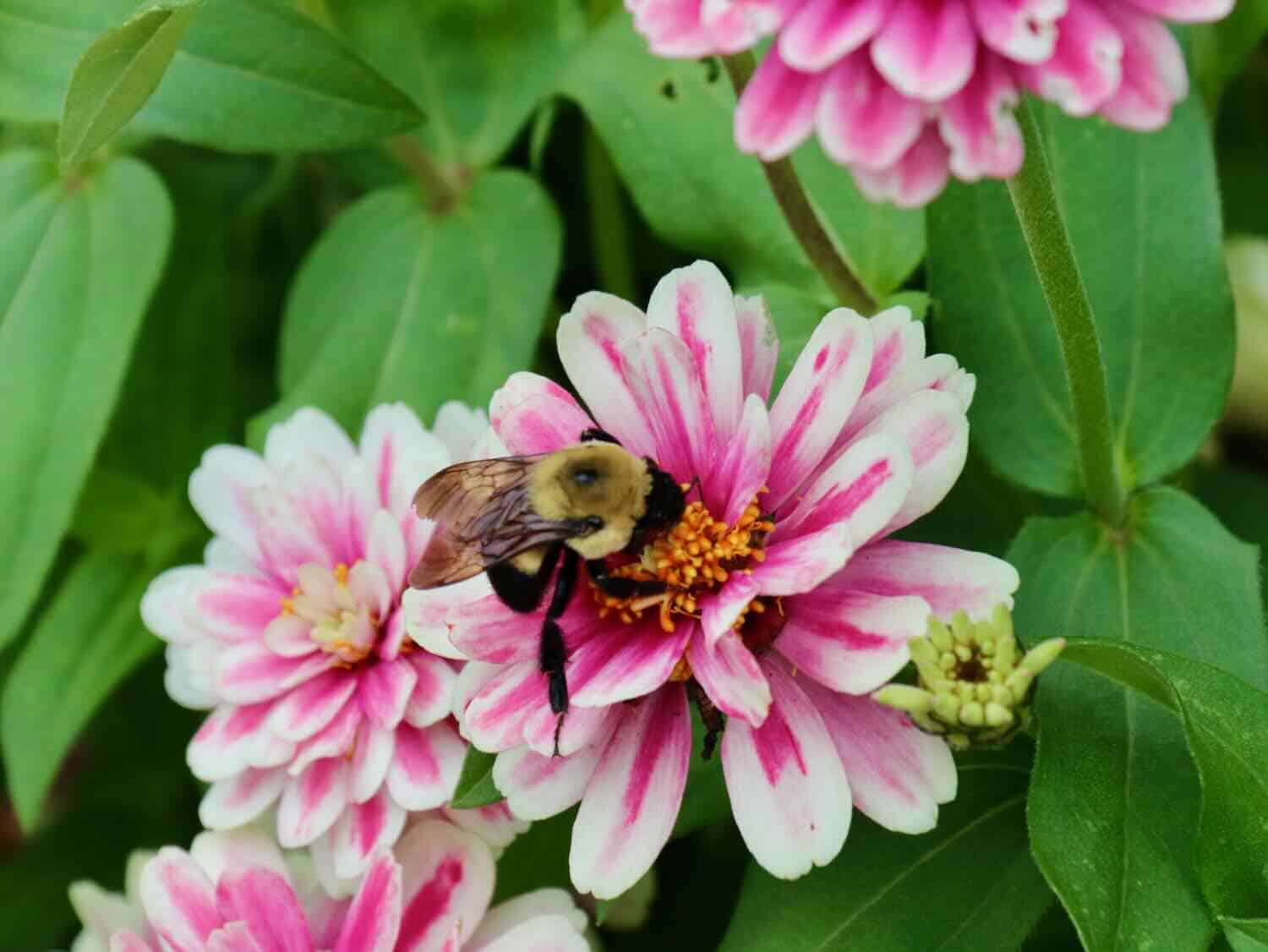
At Callaway Gardens, you’ll see how plants and insects can have mutually beneficial relationships. The butterfly uses the plant source as food while the plant is receiving the benefits of pollination.
Want to start a butterfly garden?
Harris advises, “You can easily start a small, low-maintenance project for $100-$200, through container gardening.” Or add them as a decorative landscape touch alongside agastache, lantana, guara, and sage. in your garden”
Walking through Thornhill Hydrangea Garden
As the two of us leave the steamy hothouse, we drift downwind towards our parked car, through the Thornhill Hydrangea Garden.
The hydrangeas’ pigments are affected by PH levels in the surrounding soil. Though boasting little in the way of fragrance, the magnificent dark-and-light-purple flowerheads contain non-showy buds in the center and breathtaking inflorescences in a ring around the inner blossoms.
In springtime, the gardens are also awash with the color from azaleas at their peak. Rhododendrons flower from late winter to summer keeping the gardens are awash with color.
Multi-hued wildflowers, not intentionally seeded or planted, poke their heads surreptitiously out of the earth, embellishing the landscape much the same as an artist conjuring up beauty from a blank canvas.
Attending an organ concert at Ida Cason Callaway Memorial Chapel
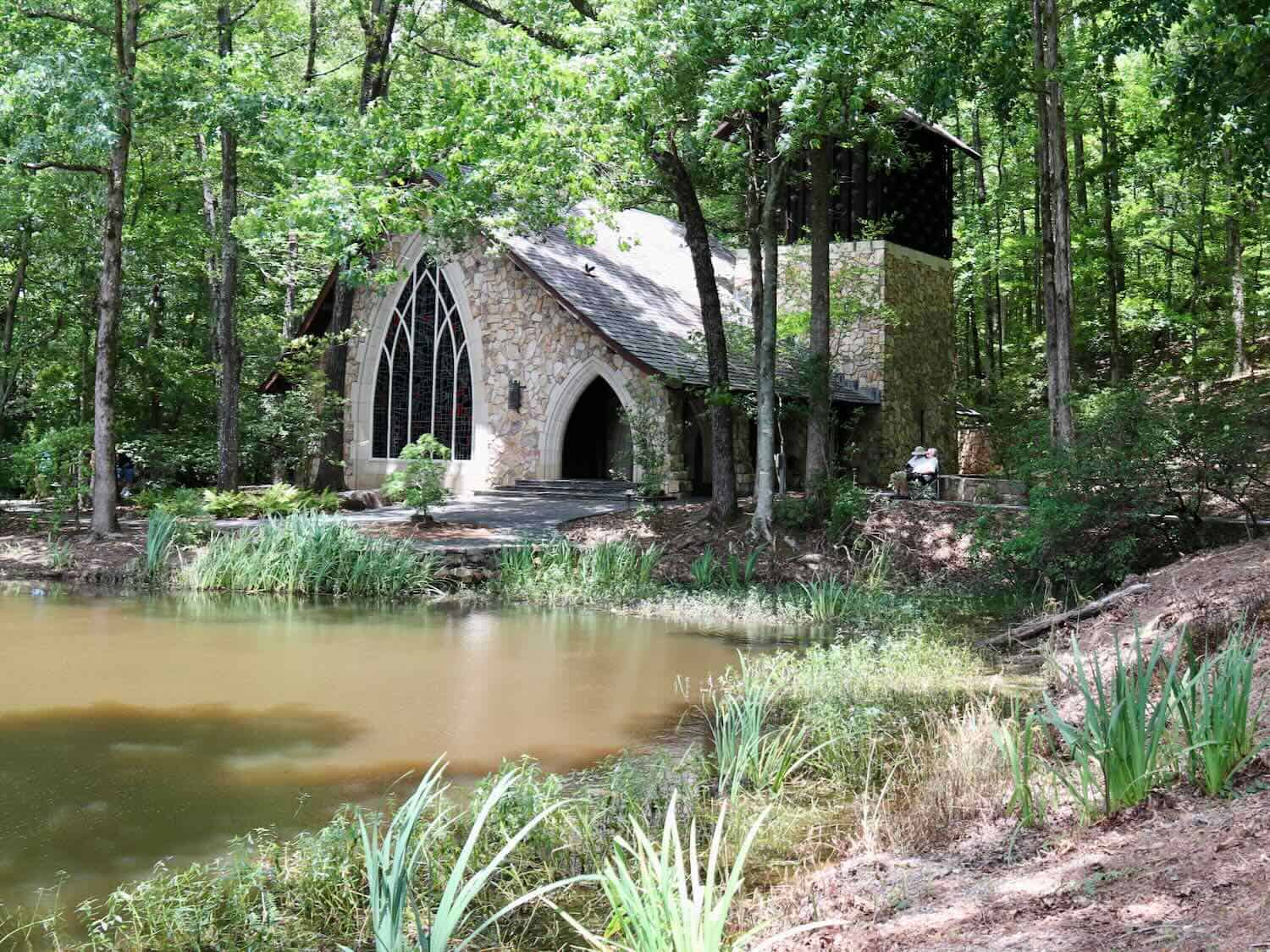
Every afternoon, for a couple of hours, guests are treated to lovely music by the on-staff organist at the Ida Cason Callaway Memorial Chapel. The jewel-toned stone sanctuary is tucked into a secluded corner of the property at Lower Falls Creek Lake.
Nothing is better than some relaxation and peaceful introspection in nature accompanied by organ music. Rather than going inside the chapel. Gustavo and I sit on welcoming benches at the water’s edge, while being serenaded by soothing, spiritual hymns.
The scent of pine wafts through the air, mingling with the floral bouquets from the neighboring gardens. Hints of perfume arise from honeysuckle shrubs opening at dusk for the evening’s pollination by moths.
Roses exude their fruity essences. Spindly crimson petals of Florida anise exhale their breath of licorice vapor, an aphrodisiac for the senses.
Big leaf magnolias emit a hardy incense. An oversweet cloying snapdragon scent contrasts with the delicate floral balm of lavender blooms.
Callaway Gardens Resort: a relaxing wellness retreat

Nothing screams wellness retreat quite like The Lodge and Spa at Callaway Gardens (book here). With 150 luxurious hotel rooms at the main lodge and cabins dotting the woodlands, the resort offers specialty meditation and yoga retreats.
You’ll also find a fully-functioning spa, a hot tub and cabana swimming pool, accompanied by healthy dining choices.
Activities for adrenaline junkies include hiking, biking, angling, tennis, boating, putt-putt and golf. All of the activities are geared towards keeping fit.
Guests can whip their bodies into shape through engaging outdoor recreation and become one with nature here, in the heart of Pine Mountain, GA, barely an hour and 15 minutes out of Atlanta. But you’ll realize, just like we did, that Callaway is absolutely worlds away from the hustle-and-bustle of the big city.
Where to eat
As a wellness destination, the restaurants on-site are sure to stimulate the appetite. I enjoyed the tasty delicacies at the Discovery Center Café, serving burgers, wraps, plus salads and grain bowls.
Other dining venues include the Champions Grille at the Golf clubhouse or the Cabana Bar for afternoon milkshakes.
The elegant Piedmont Dining Room, located just inside the lodge entrance, offers handcrafted, gourmet sandwiches and entrees like Kansas City strip steak or seared citrus salmon.
Active things to do at Callaway Gardens Resort
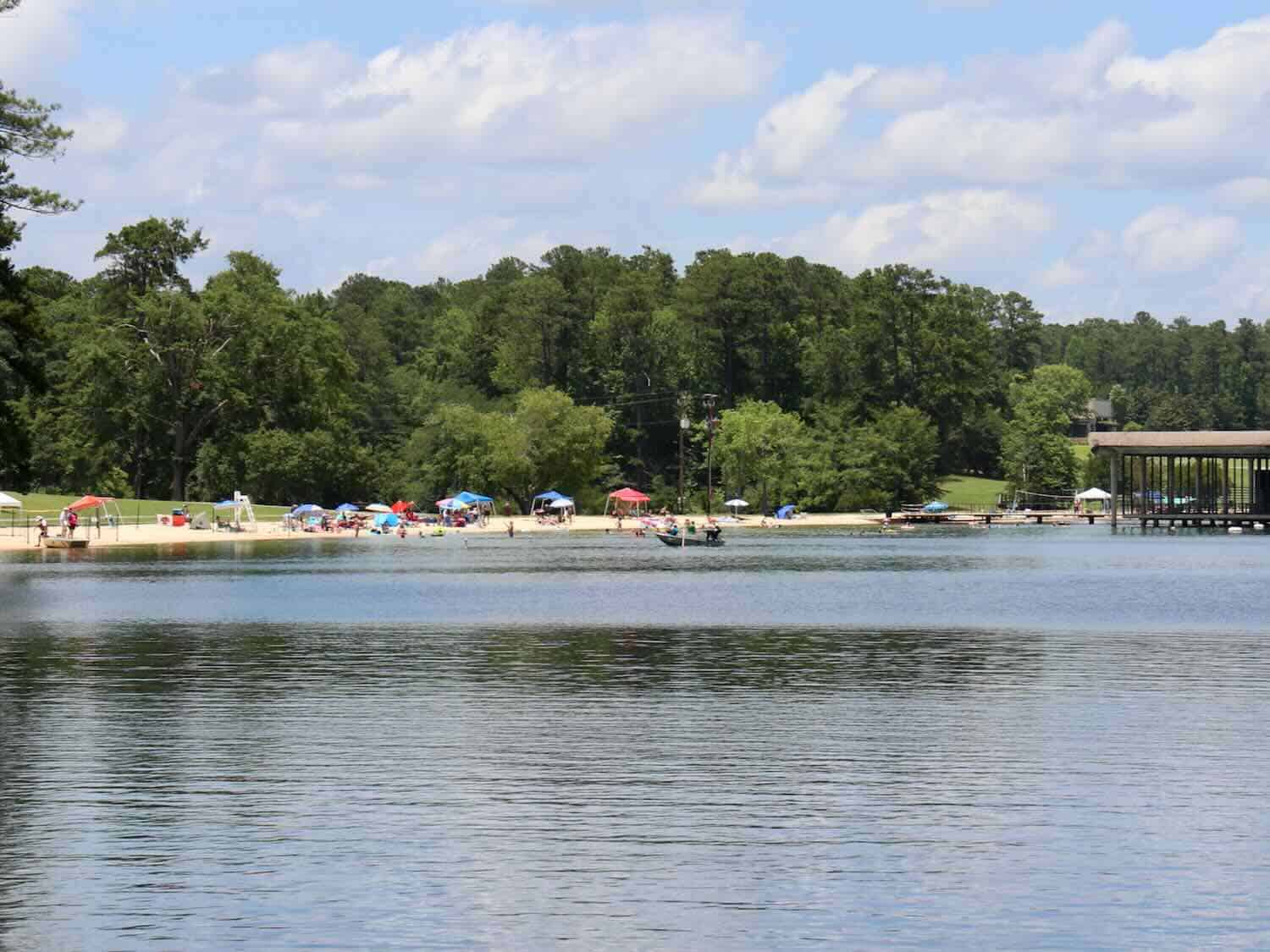
Active boomers will enjoy Callaway Gardens Resort (official website) for the many active things to do. My husband and I choose bicycling, navigating the obstacle course, ziplining and canoeing.
While bicycling, my husband and I enjoy the scenery as we cruise along miles of biking paths.
On the overhead obstacle course, we appreciate the comforting tether of a harness.
Later, the wind ruffles our hair as we sail across Callaway Gardens on a zip-line.
Water splashes against our face while canoeing at Robin Lake. Is it just the spray from our paddles or the leaping of a startled fish?
After all the active fun, spending time on the lake’s beach is a wise choice. The sun warms up the sand underneath my beach towel as I relax from all the active fun.
Golfers will enjoy a round or two on the lavish golf course. Twittering birds and flowering shrubs add to the experience.
While you are here
While you are at Callaway Gardens, take time to visit the Roosevelt’s Little White House State Historic Site (website) located a mere five miles away in Warm Springs. Here, President Franklin D. Roosevelt sought treatment in neighboring Warm Springs for his paralytic limbs.
Nearby, the largest state park in Georgia, F.D. Roosevelt State Park (website) includes 42 miles of hiking trails. The 9049-acre park also offers bicycling, horseback riding and much more.

